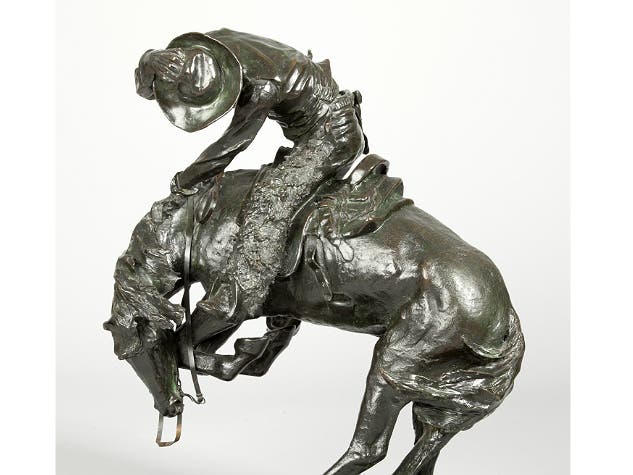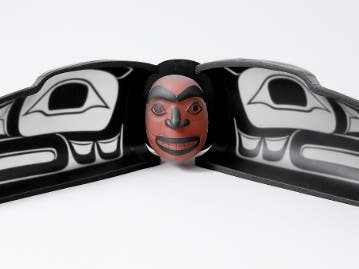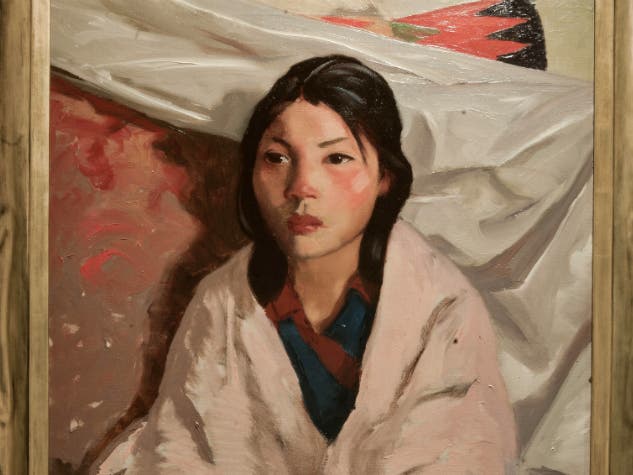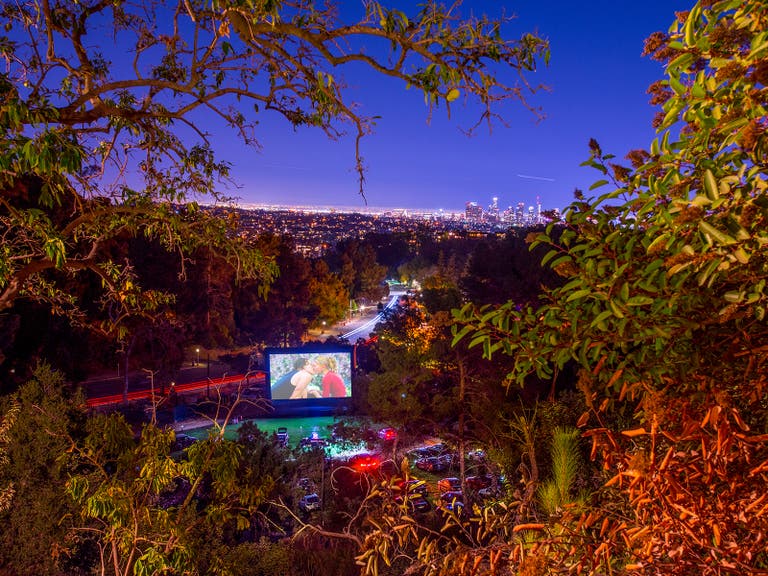The Autry Presents "New Acquisitions Featuring the Kaufman Collection"

Now on view at the Autry Museum of the American West through July 9, 2017, New Acquisitions Featuring the Kaufman Collection presents nearly 60 paintings, sculptures and works on paper. Inspired by the gift of 49 paintings and sculptures from the collection of Loretta and Victor Kaufman, this exhibition highlights recent additions to the Autry’s growing art collections. The powerful selection of pieces represents diverse peoples and perspectives, including bronzes by Frederic Remington, Allan Houser, and Tammy Garcia; paintings by Rick Bartow and Eanger Irving Couse; lithographs by Fritz Scholder; watercolors by David Einstein; and other artworks that reveal a dynamic vision of the American West.
“Together, these works present a nuanced vision of the West as a place often caught between different ideas of ‘old’ and ‘new,’ of an imagined world that exists in the past and a contemporary place informed by multiple voices,” said Amy Scott, the Autry’s Chief Curator and Marilyn B. and Calvin B. Gross Curator of Visual Arts.
Organized thematically in the Norman F. Sprague, Jr. Gallery, the artworks are set alongside quotes that describe aspects of experience and identity in the American West. These words support, challenge, or complicate the artworks, collectively suggesting that a work of art - like any form of representation - does not always tell the whole story.
“Much like the Autry collection as a whole, this exhibition includes many perspectives, particularly with regard to how artists throughout history have romanticized and stereotyped Native peoples - and how contemporary Native artists are using art to regain control of their image,” explains W. Richard West, Jr., the Autry’s President and CEO. “In this way, the exhibition is far more than a display of exquisite art; rather, it takes a deep dive into the social, cultural and political realities of this complicated region.”

THE ULTIMATE ICON
The first section of the exhibition, The Ultimate Icon is dedicated to the Western archetype, the cowboy. Artworks and quotes contrast nostalgia developed in the late 19th century - embodied in the rugged white individualist - with the not-so-glamorous reality of diverse working cattlemen. The excitement of Frederic Remington’s turn-of-the-century bronze, Rattlesnake is matched in recent sculptures by Harry Jackson and Herb Mignery. Doug Owen’s life-size horse made from car parts offers a more ironic point of view. Paintings by Bill Owen, Bill Anton, and others portray the lives of today’s cowboys, whereas others depict rodeo riders: the icon made contemporary.

Ourselves and Others
Ourselves and Others consists of a diverse range of works depicting Native peoples by artists from both within and without the culture. Nineteenth-century lithographs by George Catlin, among some of the first images of Indians viewed by white Americans, are seen as precursors to the romanticized realism of 20th century painters such as Roy Anderson. Bronzes by Harry Jackson, such as Sacagawea II (1980), stand in marked contrast to Andrea (2014), a monumental sculpture by Tammy Garcia (Santa Clara Pueblo), and The Guardian (2004) by Arlo Namingha (Tewa/Hopi). Sioux Chief (1979) by Fritz Scholder (Luiseño) navigates the terrain between Native imagery and mainstream modernism, while Harry Fonseca (Maidu) and Tony Abeyta (Navajo) paint in abstract styles that combine traditional and contemporary sources. Modern interpretations of tradition are seen also in a raven transformation mask by Preston Singletary (Tlingit), a ceramic by Deborah Clashin (Hopi), and a basket by Jeremy Frey (Passamaquoddy).

People and Place
The final section, People and Place presents paintings inspired by the sense of place embraced in art across the Southwest. In the early 20th century, Modernist artists were drawn to the Taos Pueblo, where they found an “authentic” American culture untainted by materialism. Indian life as inherently tied to the land was a major theme of Taos Society of Artists members Eanger Irving Couse, Oscar Berninghaus, and Joseph Henry Sharp; several major examples of their work are included. Famed Ashcan School realist Robert Henri also spent time in New Mexico, as represented here with the fine portrait Gregorita (1917). Contemporary artists continue to be moved by the Southwest light and landscape. David Einstein’s nearly abstract watercolors evoke desert landscapes and ocean light, whereas A River Runs Through It (2011) by Billy Schenck offers a composite view of iconic Western places. Together, these works emphasize the role of perception in creating an experience of place - a concept that plays a powerful role in the depictions of the West throughout history.

